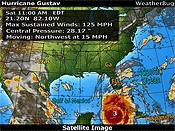The Jewish Calendar
The Jewish calendar as we know it today is a unique combination of the solar year and lunar months.
The earliest Hebrew calendar known to us was found in excavations at the ancient city of Gezer near the modern city of Tel Aviv. It was written on a clay tablet in ancient Hebrew script. The part that could be deciphered was as follows:
"A month of fruit harvest. A month of sowing. A month of after-grass. A month of flax harvest. A month of barley harvest. A month of everything else. A month of vine pruning. A month of fig harvest."
This seems to have come into being after people became settled and worked in agriculture. Until then, nomads traveling seemed to be more cognizant of seasons rather than months. Winter meant rain. Summer meant lack of rain. Years were counted by the sun. People realized there were times when the days were longer and times when they were shorter. Gradually, the period of time it takes for the moon to travel around the earth became known as a month. The Hebrew word for month is Hodesh whose root means "new". A month became the period of time between new months.
A lunar month is 29 days, 12 hours, and 44 minutes. A lunar year is twelve months containing 354 days, 8 hours, and 48 minutes. This makes it about 11 days shorter than the solar year of 365 days, 12 hours, and 49 minutes. An adjustment must be made so that the holidays follow at the affixed time given by Father Yah/God.
Deuteronomy 16:1 "You shall observe the month of springtime and perform the pesach-offering for the Lord, your God, for in the month of springtime the lord, your God, took you out of Egypt at night."
Numbers 9: 1-3 " The Lord spoke to Moses, in the Wilderness of Sinai, in the second year from her exodus from the land of Egypt, in the first month, saying: "The Children of Israel shall make the Pesach-offering in this appointed time. On the fourteenth day of this month in the afternoon shall you make it, in its appointed time; according to all its decrees and laws shall you make it."
To make sure the holidays fall at the appointed time, a plan for leap years was established. It was determined that in a cycle of 19 years, 7 leap years would occur with an additional month added, called Adar Sheni, Second Adar. These would fall on the 3ed, 6th, 8th, 11th, 14th, 17th, and 19th year of each cycle. Five months have 30 days, five months have 29 days and two months vary from year to year.
The names of the Hebrew months with their holidays:
Nissan-Passover -"the time of our freedom" commemorates the Exodus from 400 years of slavery in Egypt. This was also the set time Yeshua came into Jerusalem as Father Yah's "Sacrificial Lamb". Not Easter/Ishtar!
Iyar- Memorial Day, Israel Independence Day, Lag B'Omer
Sivan- Shavuot, what Christians call "Pentecost" This is the set time/Moed Jews celebrate the first covenant and Christians celebrate the renewal of this Covenant or new covenant. The giving of the Torah on Mount Sinai and first fruits.
Tammuz
Av- Tisha B'Av (Destruction of both the First and Second Temples)
Elul
Tishri- Rosh HaShannah, Yom Kippur, Sukkot the festival of "Joy" or "Time of joy". The Jewish new year. A time of "Teshuva" or repentance. The High Holy Fast Day of Yom Kippur.
Heshvan
Kislev- Chanukah
Tevet
Shevat- Tu b'shevat (Birthday of trees)
Adar- Purim. In the leap years, Purim is celebrated in Second Adar.
There are no names for the days of the week on the Jewish calendar. They fallow the creation story, Father Yah/God calls the days, Day one, Day two, etc. Only the seventh day has a name Shabbat. It was on this day that Yah/God rested all His work and creation.
The Jewish calendar we use today was codified by Hillel the Second about 1600 years ago. It is today the most accurate for gauging the passage of time. Indeed, in Maimonides' calculations to the millionth of seconds, the hour divided into 1080 parts turns out to be the final calculations achieved by NASA scientist when determining precise timing for space travel.
An appropriate time to bless Father Yah/God for this moment in time.
Baruch Ata Adoni, Eloheinu Melech ha'olam, shehechiyanu, v'kiyamanu, v'higiyanu, l'zman hazeh.
Blessed are You, O Lord our God, King of the Universe who has kept us in life, and sustained us, and allowed us, to reach this time.
Year 5767
Today is 23rd of November, Thanksgiving Day 2006. On the Jewish calendar it is the second day of Kislev, starting the third month of the Jewish year.
Here are some special days coming up on the Jewish calendar;
1. On the evening of December 15th, Starts Chanukah and goes on for eight days ending on December 23ed. On the Jewish calendar, it is from the evening of Kiselv 24, until the second day of Tevet. The month of Tevet starts on December 22ed.
2. On the 31st of December it is a traditional fast day. The fast of Tevet, the tenth day of Tevet. The next Jewish month starts on January 20th, and is called Sh'vat. This year Rosh Chodesh/First of the month, Sh'vat is also on Shabbat/Sabbath.
3. The next Rosh Chodesh/first day of the month is Adar and starts on February 19th. On the 11th of Adar, The first day of March is a traditional fast day called the "Fast of Esther".
4. Two days after the fast of Esther, is Purim. Purim and Shushan Purim, are on the 4th and 5th of March or Adar 14th and 15th.
5. The first day of Nisan is on March 20th, and goes to April 19th. This is a special time that Christians should observe. On the evening of April second, starts Pesach or Passover. It is a fast day called "Fast of the Firstborn"This is the time when Yeshua/Jesus presented Himself to the Priest of the Temple as God's pure and spotless lamb. He was arrested, hung on the cross, died, was buried and rose again on this feast time. (See the Feasts in the section called Ephraim's Arrow) From April second until The 9th is Passover week. On the Jewish calendar it is from the evening of Nisan 14 until Nisan 21. On Wednesday the 4th of April/Nisan 16, starts the counting of the Omer and 50 days later is Shavuot/Pentecost.
6. The next Month on the Jewish calendar is Iyyar and starts on April 19th. Day 16 of counting the Omer, and goes to the 17th of May and the 44th day of the counting of the Omer. On the 18th of May starts the Month of Svan on the Jewish calendar. On Svan 6th or 23ed of May is the day of Pentecoast or Shavuot where the Jews and Christians celebrate the old and renewed Covenant of God. The next Month on the Jewish calendar is Tammuz and starts on June 17th. On Tammuz 17th or July 3ed is "The fast of Tammuz. On July 16th starts the next Month on the Jewish calendar, Av. Av 9 or July 24th is another fast day called "Tisha B'Av". On August 15 starts the next Jewish Month of Elul, and then the Jewish year starts over again on the first day of Tishrei called Rosh Ha'Shanna.










